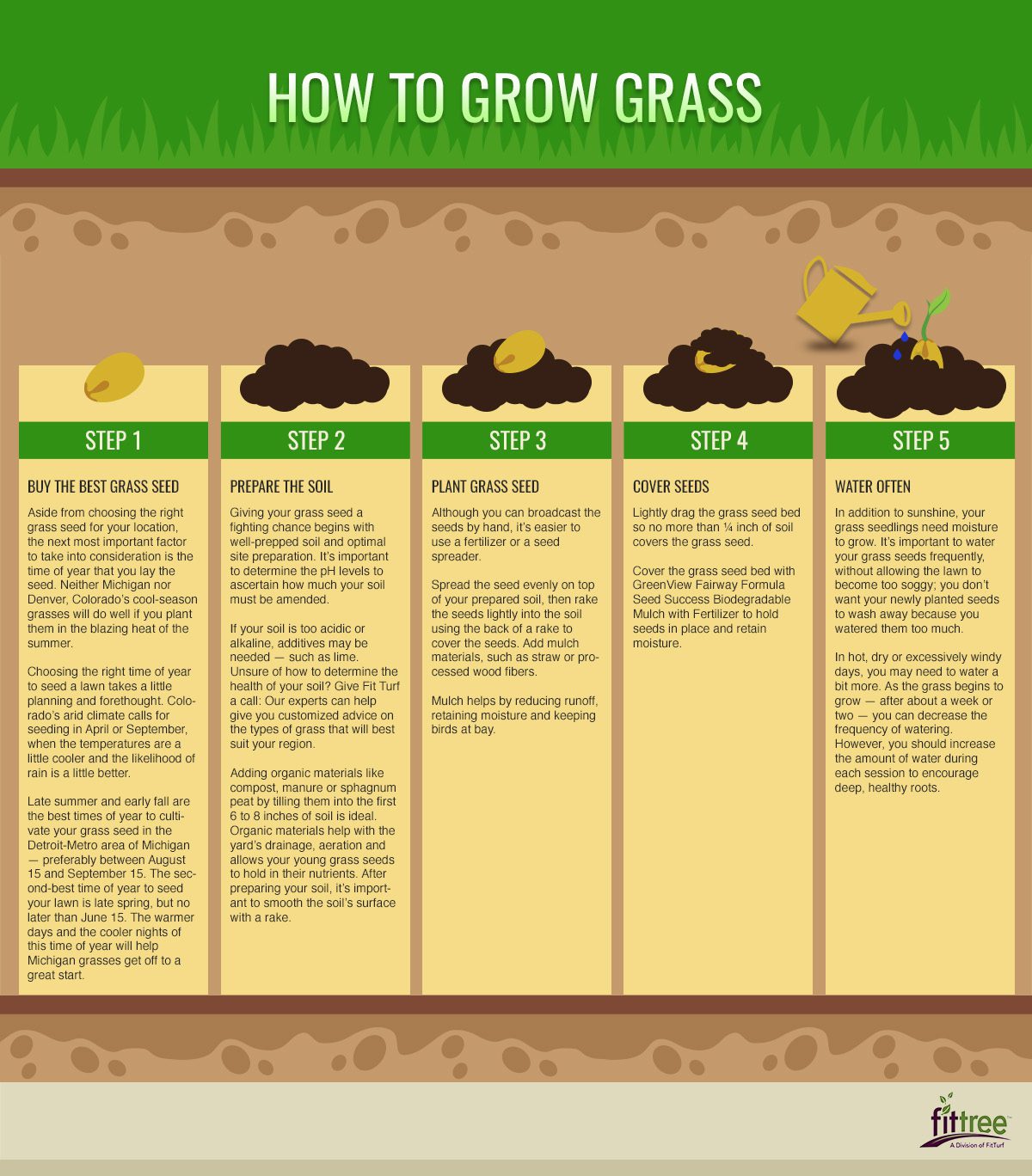Customer Support
303.221.6900How to Grow Grass
Whether you are tackling a large DIY project by reseeding your entire lawn, or you are filling in a few thin patches to add a bit more lushness to your turf grass, being informed about the steps in the grass-growing process will go a long way toward helping you grow a great-looking yard.

Types of Grass
One of the most important factors that will help your lawn be successful is choosing the right type of grass. Native grasses and those that work with the natural climate of your neck of the woods are always the best choice. Choosing the wrong type of grass seed will cause your grass seed to fail; it will only cause a great deal of frustration in the long run. Although Colorado regions require cool-season grasses, our Fit Turf customers in the Metro-Denver area have different environmental challenges.
Colorado Grasses
Colorado’s mountainous climate and heavy, alkaline clay soil needs are unique to the state. Kentucky bluegrass is hardy here, although it is a higher-maintenance choice with higher sun and water needs. Tall fescue grasses do well here, as do fine fescue grasses. These drought-resistant grasses can withstand temperatures down to -30 degrees Fahrenheit. Blue grama grass (bouteloua gracilis) is Colorado’s state grass and offers a drought-resistant benefit. It also has a hands-off, low-maintenance care factor that is appealing to many Colorado homeowners. It thrives in USDA zones 3 through 9, and can be grown in the higher elevations of The Centennial State — up to 7,000 feet.
All About Timing
Aside from choosing the right grass seed for your location, the next most important factor to take into consideration is the time of year that you lay the seed. Colorado’s cool-season grasses will not do well if you plant them in the blazing heat of the summer. Choosing the right time of year to seed a lawn takes a little planning and forethought. Colorado’s arid climate calls for seeding in April or September, when the temperatures are a little cooler and the likelihood of rain is a little better.
Prepare the Soil
Giving your grass seed a fighting chance begins with well-prepped soil and optimal site preparation. It’s important to determine the pH levels to ascertain how much your soil must be amended. If your soil is too acidic or alkaline, additives may be needed — such as lime. Unsure of how to determine the health of your soil? Give Fit Turf a call: Our experts can help give you customized advice on the types of grass that will best suit your region.
Adding organic materials like compost, manure or sphagnum peat by tilling them into the first 6 to 8 inches of soil is ideal. Organic materials help with the yard’s drainage, aeration and allows your young grass seeds to hold in their nutrients. After preparing your soil, it’s important to smooth the soil’s surface with a rake.
Seeding Grass
Although you can broadcast the seeds by hand, it’s easier to use a fertilizer or a seed spreader. Spread the seed evenly on top of your prepared soil, then rake the seeds lightly into the soil using the back of a rake to cover the seeds. Add mulch materials, such as straw or processed wood fibers. Mulch helps by reducing runoff, retaining moisture and keeping birds at bay.
Water Often
In addition to sunshine, your grass seedlings need moisture to grow. It’s important to water your grass seeds frequently, without allowing the lawn to become too soggy; you don’t want your newly planted seeds to wash away because you watered them too much. In hot, dry or excessively windy days, you may need to water a bit more. As the grass begins to grow — after about a week or two — you can decrease the frequency of watering. However, you should increase the amount of water during each session to encourage deep, healthy roots.
When to Mow
You can mow the newly sprouted blades of grass when they reach a height of about 3 inches. Proper mower maintenance comes into play here: Keep the blades of your mower sharp and well maintained. Dull blades can injure your yard, particularly when mowing tender, young blades of grass nurtured from seed. Keep foot traffic off your new turf until you are unable to see the soil.
Fertilizers & Weed Control
Lawns that have been seeded in early spring will normally be OK until fall, then the turf should be fertilized again. Lawns seeded in the fall will need to be fertilized the following spring. Unsure about when to fertilize or add appropriate weed control to your newly seeded yard? Contact Fit Turf for more information or to arrange a regular maintenance schedule, such as our Greenskeeper Plus Complete Care Program.
Although establishing a yard from seed can seem daunting at first, following these simple steps can mean success for your new turf grass. Choosing the right grass seeds, appropriately preparing your site, feeding your new lawn and watering it often will help your yard thrive.
